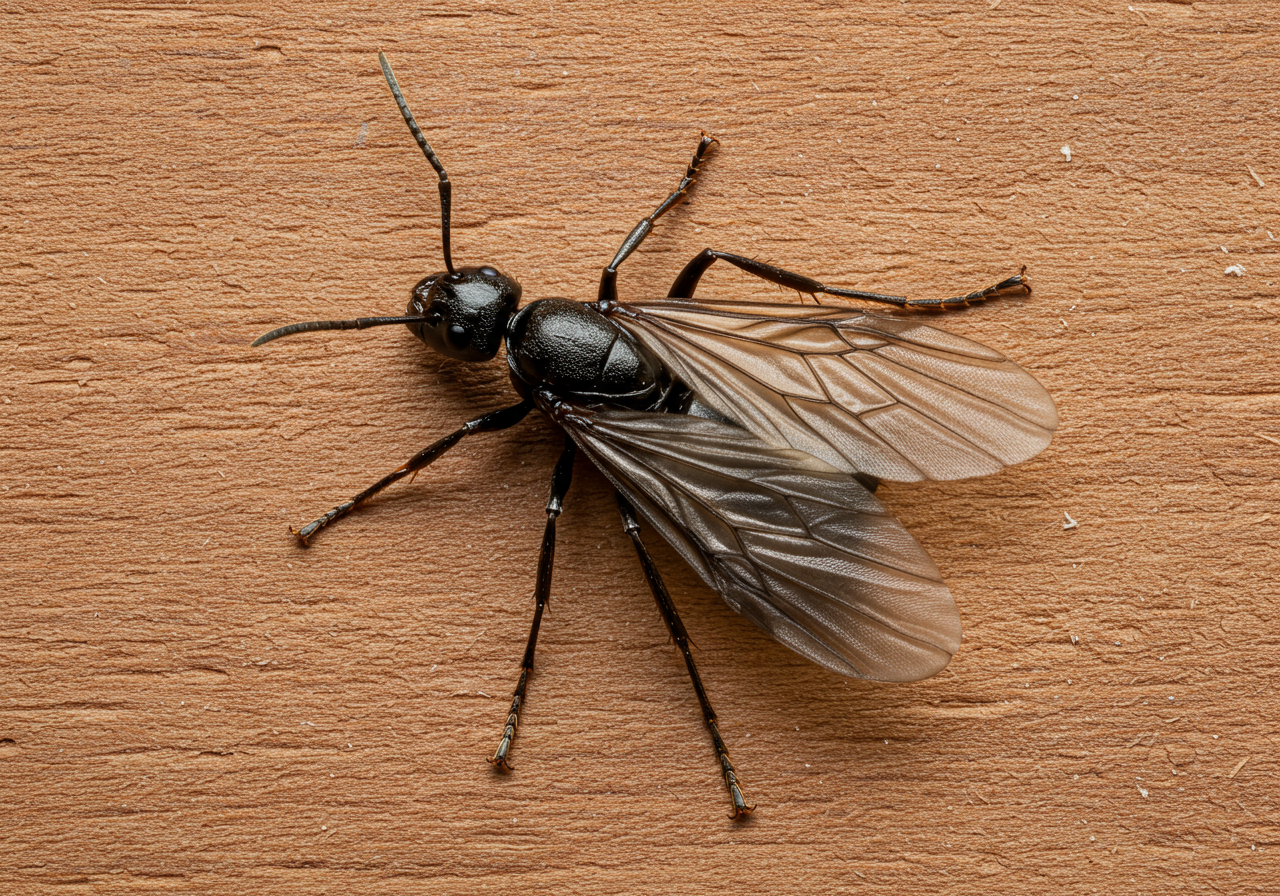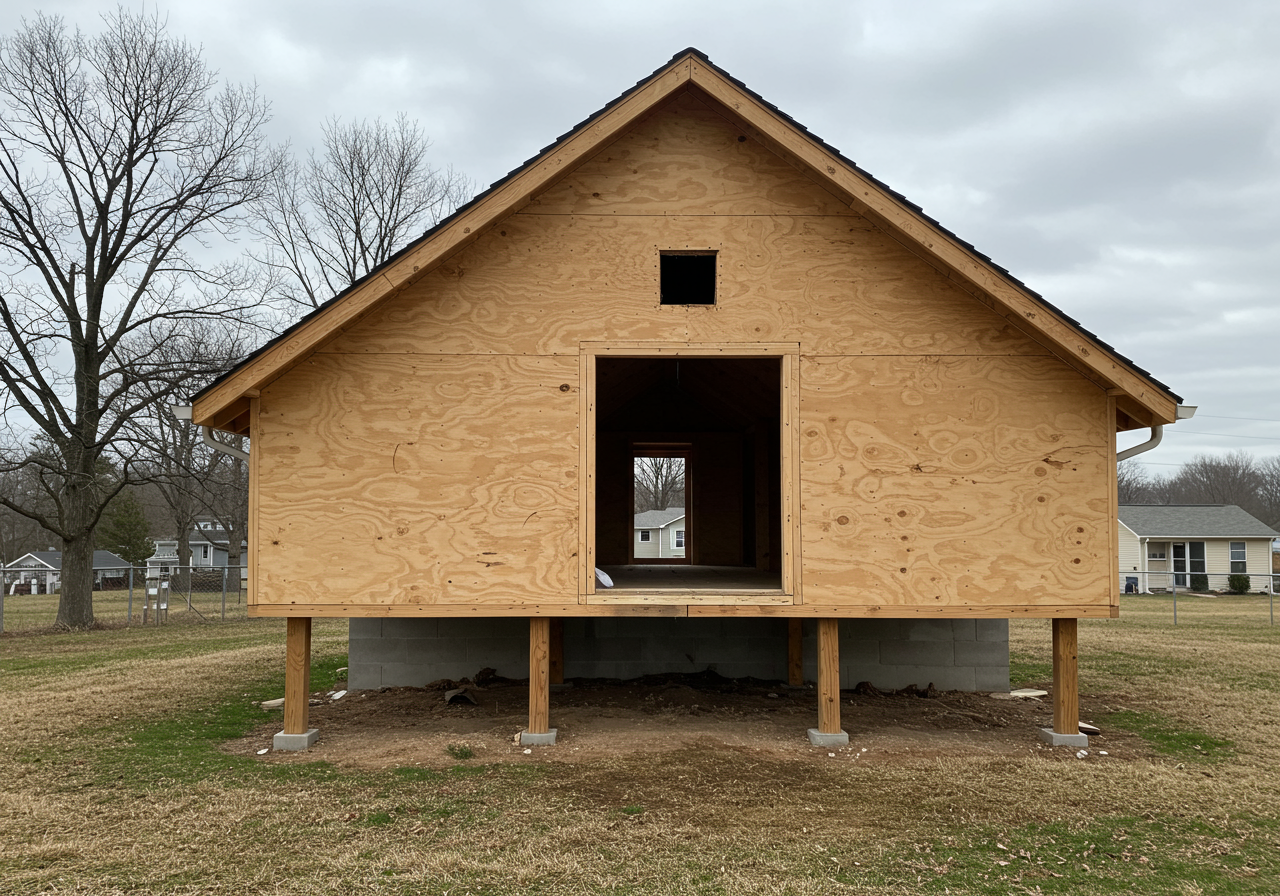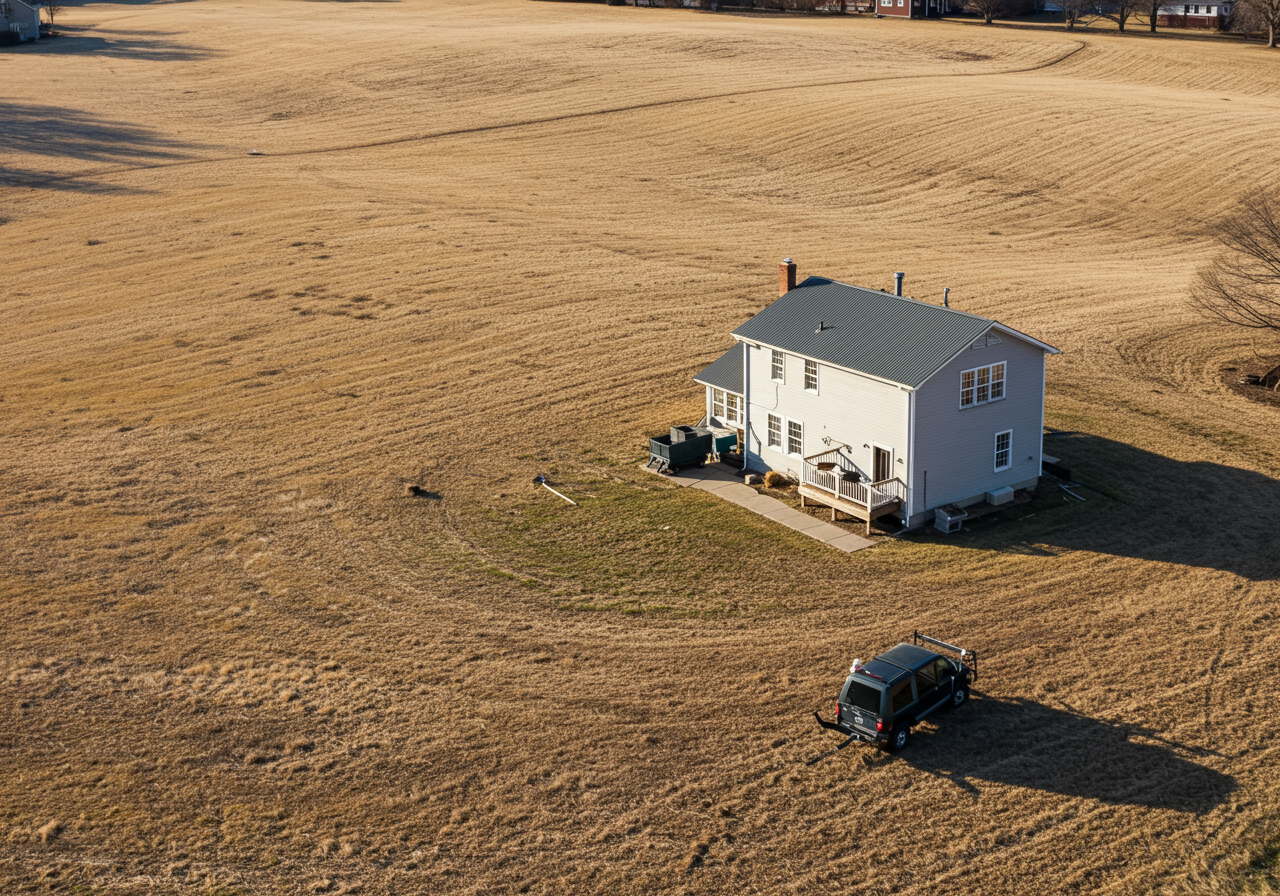
Flying Ants vs. Carpenter Ants: Easy Wing ID for Homeowners
Worried about flying insects around your home? It's crucial to know the difference between harmless flying ants and destructive carpenter ants. Our simple guide helps you identify carpenter ant wings, a tell-tale sign of a problem that can lead to costly wood damage. Learn what to look for and discover how Resolve Pest Management can protect your home from these unwanted invaders.
Spot the Difference: Your Guide to Carpenter Ant Wing Identification in New Jersey Homes
Finding winged insects in your home can be unnerving. Are they just harmless ants, or something more serious, like termites? For homeowners in New Jersey, understanding the difference between these flying invaders is crucial, especially when it comes to carpenter ant wing identification. These busy ants can cause significant damage if left unchecked, making early and accurate identification key to protecting your property.
At Resolve Pest Management, we often hear from worried residents across Ocean and Monmouth Counties who've spotted "flying ants." Our goal is to help you understand what you're seeing and provide expert solutions. This guide will walk you through how to identify carpenter ant wings, helping you tell them apart from other winged pests, particularly termites.
Why Winged Ants Appear and Why It Matters
When you see winged ants, often called "swarmers," it means a mature ant colony is ready to expand. These are the reproductive members – male and female ants – that leave the nest to find a mate and establish new colonies. Their presence, especially indoors, is a strong indicator that an established colony is nearby, potentially within the walls or wooden structures of your home.
The most common confusion is between winged carpenter ants and winged termites. Both pests can swarm, and both can cause serious structural damage to your home, but their methods and the type of damage they inflict differ. Knowing which one you're dealing with is the first step towards effective pest control.
The Big Reveal: Carpenter Ant Wing Identification
To tell if those flying insects are carpenter ants, focus closely on their wings and body features. Here’s what to look for:
Carpenter Ant Wings: The Key Differentiators
- Unequal Wing Size: This is the most important clue! Carpenter ants have two sets of wings. Their front wings are noticeably longer than their hind wings. Imagine putting your hands together, palms flat – the front wings would extend much further than the back ones.
- Color and Texture: Carpenter ant wings are typically clear, sometimes with a brownish or smoky tint, and have a visible network of veins. They often appear stronger and more rigid than termite wings.
- Vein Pattern: While you might need a magnifying glass, the vein patterns can also differ. For a homeowner, the size difference is usually enough.
Beyond the Wings: Other Identifying Features (Helpful for Confirmation)
While wings are the focus, quickly checking other body parts can confirm your suspicions:
- Waist: Carpenter ants have a distinct, narrow, "pinched" waist, similar to an hourglass figure. Termites have a broad, straight waist.
- Antennae: Carpenter ants have "elbowed" or bent antennae. Termites have straight antennae that look like a string of beads.
- Body Color: Most carpenter ants found in New Jersey are black, or a combination of red and black. Termites are usually paler in color, often creamy white or yellowish.
Quick Comparison Chart: Carpenter Ant vs. Termite Swarmers
| Feature | Carpenter Ant Swarmer | Termite Swarmer |
|---|---|---|
| Wings | Front wings longer than hind wings | All four wings are roughly the same size |
| Waist | Pinched (narrow) | Broad (straight) |
| Antennae | Elbowed (bent) | Straight |
| Body Color | Usually black, red, or a mix of both | Often pale/light-colored |
The Impact of Carpenter Ants on Your Home
Don't underestimate carpenter ants. Unlike termites, carpenter ants don't eat wood; they tunnel through it to create nests, pushing out sawdust-like material called "frass." This tunneling can hollow out wooden beams, door frames, window sills, and even insulation, compromising the structural integrity of your home over time.
A mature carpenter ant colony can contain thousands of individuals, and if they've chosen your home as their nesting site, the damage can escalate surprisingly quickly. According to some estimates, carpenter ants are responsible for significant property damage each year, though specific national statistics can be hard to pinpoint separately from other wood-destroying insects. It’s always better to address the issue swiftly.
What to Do if You Suspect Carpenter Ants
If you’ve spotted winged ants and, after checking their wings, suspect they might be carpenter ants, it's time to act.
- Don't Disturb the Swarm: While tempting, disturbing them might make it harder for a professional to assess the scale of the infestation.
- Take a Photo (or Collect a Sample): A clear photo of the insect, especially its wings, can be incredibly helpful for professional identification. If possible and safe, you can gently collect a few specimens using tape or by carefully sweeping them into a bag.
- Contact a Professional Pest Control Company: This is the most crucial step. Carpenter ant colonies can be deeply hidden, and DIY solutions often only address the visible ants, not the main nest.
Your Local Carpenter Ant Experts: Resolve Pest Management
This is where Resolve Pest Management steps in. As a locally owned and operated pest control company based in Bayville, NJ, we understand the specific pest challenges faced by homeowners in Ocean County and Monmouth County.
Our Ant Control service is specifically designed to tackle carpenter ant infestations. When you call us, our experienced technicians will:
- Conduct a Thorough Inspection: We'll meticulously examine your property to confirm the pest identity, locate the main nest, and identify entry points and conducive conditions.
- Develop a Tailored Treatment Plan: Based on our findings, we'll create a targeted strategy using family- and pet-friendly solutions whenever possible. Our approach focuses on eliminating the entire colony, not just the visible swarmers.
- Provide Ongoing Protection: We offer Seasonal Pest Protection Plans to ensure your home remains free from future ant invasions and other common New Jersey pests.
Our S.T.I.N.G. promise – Service, Trust, Initiative, Nurture, and Grit – guides every interaction. We pride ourselves on rapid scheduling, reliable results, and clear communication, earning us a reputation as the trusted choice for pest control in Central New Jersey.
Serving Your Neighborhoods
Resolve Pest Management proudly protects homes and businesses across a wide range of communities in New Jersey. We understand the local environment and its unique pest pressures.
In Ocean County, we serve residents in: Toms River, Brick, Lakewood, Jackson, Bayville, Manahawkin, Whiting, Lakehurst, Barnegat, Forked River, Tuckerton, Point Pleasant, Seaside Heights, Seaside Park, Beachwood, Barnegat Light, Ship Bottom, Beach Haven, Lavallette, and Ocean Gate.
In Monmouth County, our services extend to: Middletown, Howell, Manalapan, Marlboro, Freehold, Long Branch, Ocean Township, Wall Township, Eatontown, Tinton Falls, Hazlet, Holmdel, Red Bank, Neptune Township, Asbury Park, Aberdeen, Matawan, Keyport, Atlantic Highlands, and Rumson.
If you live in any of these areas and are concerned about carpenter ants or any other pest, don't hesitate to reach out.
Don't Let Carpenter Ants Compromise Your Home
The sight of flying ants doesn't have to be a mystery or a cause for panic. With the right knowledge about carpenter ant wing identification, you're empowered to take the first step towards protecting your home.
If you've spotted winged ants and suspect a carpenter ant issue, or if you're unsure and need expert identification, contact Resolve Pest Management today. Our team is available 24/7 for emergency pest control services. Call us at (732) 527-5770 or email us at Office@resolvepestmanagement.com to schedule an inspection. Let us help you resolve your pest problems and restore your peace of mind.
More Blogs
Some other blogs you might be interested in



